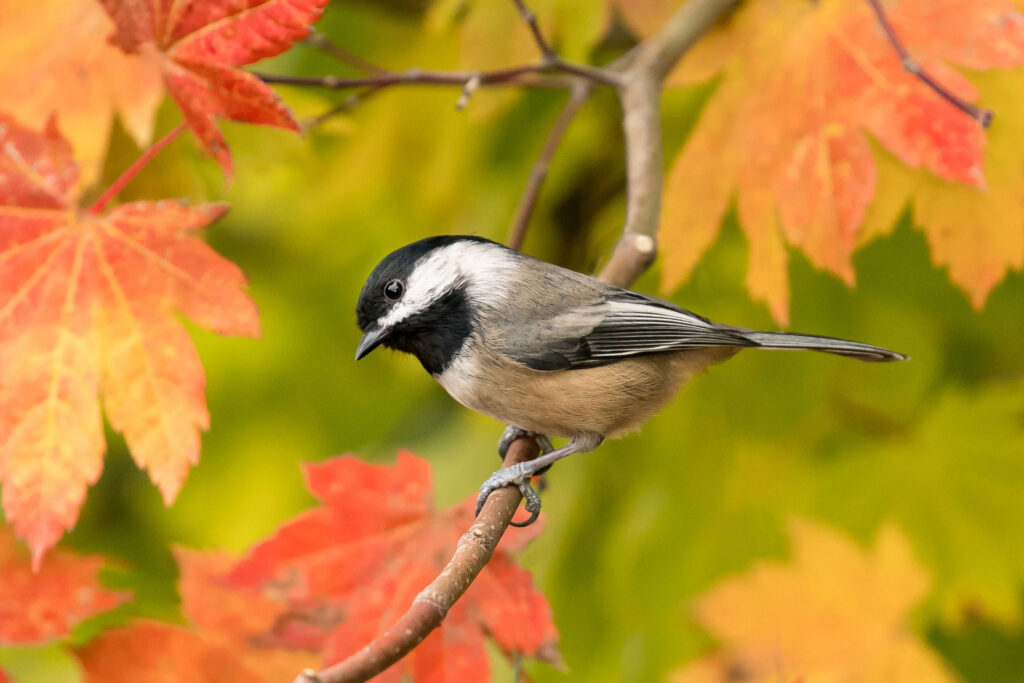The chickadees and juncos came back today. They swept in with the snow that started at 6:30 this morning and ended by noon. The accumulation wasn’t enough to turn the ground white, but it was enough to send the birds searching for our hanging feeders.
The blue jays are also back but they appeared when the leaves had turned burnt orange and the blackbirds were in full gather.

This past weekend, while out storing the last of our irrigation pipe for the winter, we saw and heard a large flock of sandhill cranes overhead.
I have always looked to the colors of my landscape to tell me the changing of the seasons, but more and more I look to the birds. There are feeders scattered about our farmyard and my office window gazes upon two cedar trees that offer perfect protection for the creatures. The comings and goings of birds are noted by me daily and I have a full library of bird books and binoculars stashed around the house for easy viewing.
This summer I talked my mom and daughter into going on a birding and grazing tour with me that we each enjoyed.
This is ironic to me because as a kid I loathed birds. This likely has something to do with my upbringing on a ranch that also doubled as one of South Dakota’s first commercial hunting preserves for upland game birds.
Through the 80s and 90s, I was a steady part of my parents’ hatchery and hunting operation. I collected eggs daily and helped in the hatchery when the new chicks began to arrive. On the hunting side of things, I packed pheasants alongside the gun dogs and when I got older, I drove hunters around. Forced to step out of my shy shell I learned to visit with people from all over the world that came to hunt in western South Dakota.
That doesn’t seem so bad you say. Of course, but like any job, there are the nitty gritty details that one glances over. The fully explosive rotten eggs that didn’t hatch would make you want to hurl your lunch. The cannibalistic nature of captive birds would leave you puzzled and working long hours to combat the issue. Rainstorms would leave a crop of young pheasants drowned in seconds if you didn’t rush to usher them under cover. In those early days of raising pheasants when our facilities were still primitive, I can remember going through and having to pick dead, soggy pheasants from a flight pen. It’s gross and heartbreaking.
As a contrary teenager, I complained so much about the bird raising that my parents only called upon me when necessary. Instead, I was delegated to the hayfield, the cowherd or grandpa, and his irrigation.
I’m not proud of my actions. Those birds helped put me through college and gave my parents a way to diversify their ranching operation. Today they are retired from over 30 years of hosting hunters to our South Dakota ranch.
And now I’m the one raising birds.
When we purchased a place just down the road from where I grew up in 2020 I was thrilled the property included a chicken coop. I know nothing about chickens other than I like to eat them and their eggs. There have been learning moments, but it hasn’t been as difficult to raise chickens as maybe it could have been because of my background in growing pheasants. I’ve repurposed feeders, lights, chicken wire, and flashing tin from the old pheasant operation.
Once again, the pheasants pulled through for me.
Codi Vallery-Mills is editor of The Cattle Business Weekly. She ranches in western South Dakota with her family. She can be reached at cattlenews@gwtc.net.
